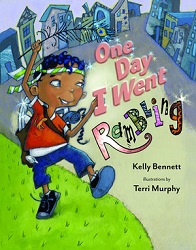So you have an idea for a children’s story. Great! Many times, our thoughts rush to PICTURE BOOK. Picture books are warm and dear to many of our hearts, harkening back to our own days as early book lovers. But is your idea enough for a complete book or might it be a magazine article or short story instead? Here are some questions to ask yourself:

Clang! by Darcy Pattison
- Is there a clear identifiable main character? Does the MC change or evolve over the course of the story?
- Is there tension and a narrative arc?
- Is there a way to make the language playful or unique? Have you used any literary tools like alliteration, consonance and assonance?
- Does the story have a universal connection and kid-relatable problem?
- Has this story been told before? And if the idea is not original, what does it offer that previous books did not?
- Does it offer a new slant or style to a familiar tale?
If the answer to any of these questions is ‘no’, or even ‘I don’t know’, then you might have an article or short story rather than a book. For a publisher to invest in a story and try to sell it in today’s very competitive marketplace, the idea has to carry a lot of weight.
Let’s say you answered ‘yes’ to some of those questions. You have forged ahead and drafted your story idea. You have revised over and over and over again, right? Yes! So, have you tried making a rough dummy of your book to see how it fits in the standard picture book format? It doesn’t matter if you cannot draw well, this is only to see if your story fits into the format and it’s perfectly OK to use stick figures and scribbles. (Publishers generally choose the illustrator, so don’t worry about that point.)

Hoot & Honk Just Can’t Stop by Leslie Helakoski
Because picture books are almost always 32 pages,that means you’ll have 14 spreads or sections to work with. This varies, but note that most books leave room for the front matter and start the text on page 5. That leaves 28 pages for the story. (Though the illustrator and art director may divide it differently later.) This is just to help you revise and you should still format submissions in a typed-double page format without any indication of page turns.
Now that you have the text divided into 14 sections, it’s time to evaluate.
Does each section…
- …advance the action? If this section is left out does the story change or suffer?
- …have illustration possibilities and do the locations/scenes vary? The same setting in each scene is not visually interesting and talking heads or two characters having a conversation makes for a difficult sell. Action verbs are one good way to give the illustrator opportunities to expand on the text and make dynamic illustrations. Avoid writing about visual details because that’s the illustrator’s territory. Instead, the text should concentrate on the other senses: hear, smell, touch, taste.
- …make the reader want to turn the page? Each section must create a curiosity in the reader’s mind that makes them turn the page.
If your story comes up short:
- Think about how to complicate the character’s life? Was the problem solved too easily? How can you make life more miserable?
- Put more at stake in the story. What does the main character stand to lose?
- Create strong characters who face big problems. Of course, everything is relative! An adult novel’s big problem doesn’t equal a children’s picture book big problem.

One Day I Went Rambling by Kelly Bennett
If your story is too long:
- Most picture books are well under 500 words. Read what is being published now for ideas on length. Type up the text from a best-selling picture book to see how it looked in submission form.
- Cut out descriptions and details that can be left for the illustrator.
- Jump into your story without too much preamble or set up. We writers often do this more for ourselves as we are developing a story but it is often not necessary to include what lead to the action.
Consider a magazine publisher.
While a magazine story may not be the first thing that came to your mind when you wrote your story, remember that not every story we write is necessarily a book.You can get more publishing credits by including magazine work in your repertoire. Some of the pluses for magazine stories are: magazine sometimes allow a higher word count, they can revisit ideas more frequently than books—especially those with holiday themes. There is not as much illustration needed to tell the story, which can translate to longer text.
Immerse Yourself
If you want to learn more about picture books and all the details of what creates a marketable story, consider attending one of our picture book workshops!








